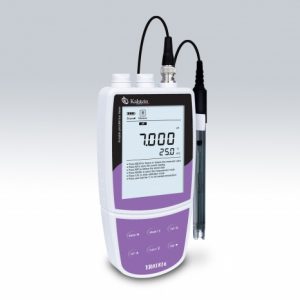Water hardness refers to the amount of calcium and magnesium dissolved in water. The term comes from the ability of water to consume soap and is linked to how difficult it is to wash with this type of water. When soap is mixed with hard water, the minerals are combined with soap and form a solid precipitate, which decreases the cleaning efficiency of the soap.
Water hardness is related to total dissolved solids or minerals, mainly calcium and magnesium. The more divalent cations dissolve in water, the harder the water is.
The most common divalent cations are calcium and magnesium; however, other divalent cations may be considered, including iron, strontium, aluminum and manganese. However, its contribution to water hardness is very low. The concentration of calcium and magnesium in natural waters generally exceeds that of any other polyvalent cation. Therefore, hardness is generally considered to be the concentration of calcium and magnesium ions in water.
Is it important to measure the hardness of water?
In industrial and hospital facilities, so-called hard water can form solid deposits, composed mainly of calcium and magnesium salts. These solid inlays can lead to damage to equipment. On the other hand, the water considered soft, has corrosive effect for equipment.
Maintaining the balance between scale and corrosivity is essential in most cases, so measuring and knowing the levels of hardness in water is an important aspect to consider.
In some processes, it may be acceptable to maintain some degree of water hardness. However, in other cases there should be no trace of hardness, in order to avoid the formation of fouling and consequently damage to equipment. This requires water softening procedures, such as precipitation or ion exchange. Monitoring of calcium and magnesium concentration is essential to optimize these procedures.
How is water hardness measured with a calcium ion meter?
We have mentioned that the hardness of water is caused by the presence of calcium and magnesium carbonates. The ratio of calcium to magnesium is usually 3:1 (Ca:Mg), so the total hardness of the water can be inferred from the determination of the calcium concentration in the sample.
Below are a series of recommendations for measuring water hardness with an ion meter.
- All samples and standard solutions should be at the same temperature, preferably room temperature.
- All samples and standard solutions must be aqueous. They must not contain organic solvents.
- The sample must have a pH between 5 and 10.
- Constant shaking of the sample, but nonviolent, is required. Take precautions to avoid that the heat generated by the magnetic stirrer changes the temperature of the solution.
- Between readings, the tip of the electrode should be rinsed with distilled water and dried with a clean towel. Do not wipe or rub the membrane.
- During electrode immersion, check for air bubbles adhering to the membrane surface. Shake the electrode gently to remove them.
- In case of slow electrode response, check membrane surface contamination. Soak the tip of the electrode in distilled water for about 5 minutes, then in a dilute standard solution, for about 5 minutes. Verify the performance restoration.
- During routine measurements, calibrate equipment frequently.
Overview of the measurement process
Place the most dilute standard solution on the magnetic stirrer and start stirring at a constant rate. Make sure the meter is in the concentration mode.
- Insert the tip of the electrode into the solution. Set the meter to the standard calcium concentration. After the reading has stabilized, set the value to memory according to the manufacturer’s instructions.
- Rinse the electrode tip with distilled water and dry.
- Place the most concentrated standard solution on the magnetic stirrer and start stirring at a constant speed.
- Insert the tip of the electrode into the solution. Set the meter to the standard calcium concentration. After the reading has stabilized, set the value to memory according to the manufacturer’s instructions.
- Rinse the electrode tip with distilled water and dry.
- Place the electrode in 100 ml of distilled water. After stabilizing the reading, fix in the memory, the target value.
- Pour 100 ml of the sample into a 150 ml beaker, place on the magnetic stirrer and start stirring at a constant speed.
- Dip the tip of the electrode in the solution and wait for the reading to stabilize. Record the concentration.
- The electrode should be recalibrated every 1 to 2 hours.
Kalstein calcium ion meters
At Kalstein we offer a wide variety of calcium ion meters, from the YR series. You can choose the one that best suits your needs. Kalstein calcium ion meters, which offer the possibility to select the concentration units, e.g. ppm, mg/L and MOL/L, simplify the measurement process by directly reading the ion concentration. In addition, they are designed with a backlit LCD screen and offer a set-up menu that allows the number of calibration points, stability criteria, temperature, unit, date and time, among others, to be set. For more information on Kalstein ion meters, visit HERE

